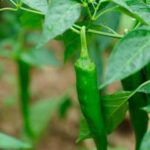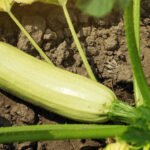Choosing the best vegetables for Texas gardens is crucial for a successful and bountiful harvest. With its unique climate and soil conditions, Texas presents both opportunities and challenges for vegetable gardening.
In this blog post, we will explore the top vegetables that thrive in Texas gardens, offering suggestions for summer, winter, drought-tolerant, pest-resistant, and small garden spaces. By understanding the importance of choosing the right vegetables for a Texas garden, you can set yourself up for a productive growing season.
Texas is known for its hot, dry summers and occasional freezes during winter, making it essential to select vegetables that can withstand these extreme conditions. Additionally, with periods of drought being a common occurrence in the state, choosing drought-tolerant vegetables is important to ensure their survival. By considering these factors when selecting vegetables for your garden, you can maximize your chances of a successful harvest throughout the year.
In this blog post, we will provide valuable insights into the best vegetable options suited for Texas gardens. From understanding climate and soil considerations to offering practical tips for maintaining a successful garden, this guide aims to empower you with the knowledge needed to grow a thriving vegetable garden in Texas. Whether you have a small space or are looking for pest-resistant options, we’ve got you covered with our comprehensive recommendations.
Climate and Soil Considerations
When it comes to vegetable gardening in Texas, the unique climate and soil conditions of the state must be taken into consideration. The hot, dry summers and occasional freezes in winter can pose challenges for gardeners, but with the right selection of vegetables, a bountiful harvest is still possible.
Climate Considerations
Texas is known for its scorching hot summers, with temperatures often exceeding 100 degrees Fahrenheit. This means that vegetables grown in Texas gardens must be able to withstand intense heat and sunlight. Additionally, mild winters with occasional freezes can impact the types of vegetables that can be successfully grown in the state.
Soil Conditions
The soil in Texas varies from region to region, but it is generally acidic or alkaline with high clay content. For successful vegetable gardening, it’s important to choose vegetables that are well-adapted to these soil conditions and amend the soil as needed to provide the best growing environment for your plants.
Choosing Vegetables for Texas Gardens
Given the unique climate and soil conditions in Texas, it’s essential to select vegetables that are well-suited to these factors. Okra, black-eyed peas, and peppers are excellent choices for Texas summers due to their heat tolerance and ability to thrive in dry conditions. Meanwhile, kale, collard greens, and carrots are ideal for withstanding occasional freezes during Texas winters. Additionally, tomatoes, squash, sweet potatoes are great options for drought-tolerant vegetables that can withstand periods of little rainfall.
By considering both climate and soil conditions when selecting vegetables for a Texas garden, gardeners can ensure a successful harvest despite the challenges posed by the state’s unique environment.
Best Vegetables for Texas Summers
When it comes to Texas gardens, the hot and dry summers can pose a challenge for many vegetables. However, there are several varieties that thrive in these conditions and can produce a bountiful harvest. Here are some of the best vegetables for Texas gardens during the scorching summer months:
- Okra: Okra is a heat-loving vegetable that thrives in Texas summers. It is not only tolerant of high temperatures but also requires minimal water, making it an excellent choice for gardeners in Texas.
- Black-Eyed Peas: Black-eyed peas are well-suited to the hot and dry weather of Texas. These legumes are not only drought-tolerant but also enrich the soil with nitrogen, making them a valuable addition to any garden.
- Peppers: With their love for heat and sunlight, peppers are an ideal choice for Texas gardens. Whether you prefer sweet bell peppers or spicy chili peppers, these plants will flourish in the scorching summer sun.
These vegetables not only withstand the high temperatures but also provide nutrient-rich produce for your table. By choosing heat-tolerant vegetables like okra, black-eyed peas, and peppers, you can ensure a successful harvest even during the hottest days of a Texas summer.
In addition to these three remarkable vegetables, there are other options that can thrive in Texas gardens during the summer months. From tomatoes to zucchini, there is no shortage of choice when it comes to selecting heat-loving plants for your garden. However, okra, black-eyed peas, and peppers stand out as some of the best options for Texas gardens due to their exceptional resilience and ability to flourish even in adverse weather conditions.
Cold Hardy Vegetables for Texas Winters
When it comes to vegetable gardening in Texas, one of the biggest challenges is dealing with the occasional freezes and mild winters. However, with the right selection of cold hardy vegetables, you can still enjoy a bountiful harvest during the winter months. Here are some vegetables that can withstand the unique winter conditions in Texas.
Kale
Kale is a superfood that thrives in cool weather, making it an excellent choice for Texas winters. It can tolerate light frosts and even becomes sweeter after being exposed to cold temperatures. There are many varieties of kale to choose from, including curly kale, Lacinato kale (also known as Tuscan or dinosaur kale), and red Russian kale.
Collard Greens
Collard greens are another cold hardy vegetable that is well-suited for Texas winters. They have a mild flavor and are packed with nutrients, making them a popular choice for southern cooking. Collard greens can withstand frost and even taste better when exposed to cold temperatures.
Carrots
Carrots are root vegetables that can withstand mild winters and occasional freezes in Texas. They are easy to grow and come in a variety of colors and shapes, adding visual interest to your winter garden. With proper care, you can enjoy a steady supply of fresh carrots throughout the winter months.
In addition to these vegetables, other cold hardy options for Texas winters include beets, radishes, turnips, and leeks. By choosing the right combination of cold hardy vegetables for your Texas garden, you can continue to enjoy fresh produce even during the cooler months.
Drought-Tolerant Vegetables
Texas is known for its hot and dry climate, making it essential for gardeners to choose vegetables that can withstand periods of drought. Tomatoes are an excellent choice for Texas gardens as they have deep root systems that allow them to access water from deeper soil layers. Additionally, varieties such as cherry tomatoes and romas tend to be more drought-tolerant than others.
Squash is another great option for Texas gardens due to its ability to thrive in warm and dry conditions. Varieties such as zucchini and yellow squash are not only drought-tolerant but also prolific producers, making them a favorite among many Texas gardeners. Furthermore, sweet potatoes are well-suited for Texas gardens as they require minimal watering once established and can tolerate the intense heat of the summer months.
In addition to choosing the right vegetables, implementing water-saving techniques such as mulching and drip irrigation can help conserve water in a Texas garden. By selecting drought-tolerant vegetables and employing water-efficient practices, gardeners can ensure a successful harvest even during the driest times of the year.
| Vegetable | Drought-Tolerance |
|---|---|
| Tomatoes | High |
| Squash | High |
| Sweet Potatoes | High |
Pest-Resistant Vegetables
Texas gardeners know how challenging it can be to keep their vegetable gardens free from pests. However, there are certain vegetables that are less susceptible to common pests in the region. Onions, garlic, and radishes are among the best vegetables for Texas gardens when it comes to pest resistance.
Onions are not only a staple in many recipes but also a great addition to the Texas garden due to their ability to repel pests like aphids and thrips. They can also deter other pests that may affect nearby plants, making them a valuable addition to any garden.
Similarly, garlic is known for its strong odor, which is effective at repelling pests such as mosquitoes and cabbage loopers. Planting garlic alongside other vegetables can help protect them from these unwanted visitors.
Radishes are another excellent choice for Texas gardens as they can attract beneficial insects that prey on common garden pests. Additionally, their pungent taste and smell can help deter certain insects and rodents from damaging neighboring plants.
Overall, incorporating these pest-resistant vegetables into a Texas garden can help minimize the presence of common pests and contribute to a more successful growing season.
| Vegtable | Pest Resistance |
|---|---|
| Onions | Aphids and thrips |
| Garlic | Mosquitoes and cabbage loopers |
| Radishes | Insects and rodents |
Best Vegetables for Small Texas Gardens
When it comes to small Texas gardens, choosing the right vegetables is key to making the most of limited space. Fortunately, there are several vegetable options that can thrive in smaller garden spaces, allowing gardeners to enjoy a bountiful harvest even in confined areas. Here are some of the best vegetables for small Texas gardens:
- Lettuce: Lettuce is an excellent choice for small Texas gardens due to its compact growth habit. It can be easily grown in containers or small raised beds, making it perfect for limited garden space.
- Spinach: Like lettuce, spinach is well-suited for smaller garden spaces. It grows quickly and can be harvested continuously throughout the growing season, making it a great option for gardeners with limited room.
- Green Beans: Green beans are another great choice for small Texas gardens. They can be grown vertically on trellises or other supports, maximizing vertical space and allowing gardeners to grow a high yield of beans in a small area.
In addition to these vegetables, other options such as radishes, herbs like cilantro and parsley, and compact varieties of tomatoes and peppers are also well-suited for small Texas gardens. These vegetables not only thrive in limited spaces but also offer the added benefit of being relatively low-maintenance.
Ultimately, the key to success with small Texas gardens lies in thoughtful planning and utilizing available space efficiently. By choosing the right vegetables and using techniques like vertical gardening and companion planting, it’s possible to create a productive and beautiful garden even in a small area.
Tips for Successful Vegetable Gardening in Texas
In conclusion, choosing the best vegetables for Texas gardens is crucial for a successful and thriving garden. The unique climate and soil conditions in Texas require careful consideration when selecting which vegetables to cultivate. From hot, dry summers to occasional freezes and drought periods, it’s important to choose vegetables that are well-suited to these conditions. By considering pest-resistance and space requirements, gardeners can set themselves up for a bountiful harvest.
One of the best vegetables for Texas gardens during the scorching summer months includes okra, black-eyed peas, and peppers. These heat-loving veggies will thrive in the hot, dry conditions that often characterize Texas summers. For the milder winters, cold-hardy options like kale, collard greens, and carrots can withstand occasional freezes. Additionally, choosing drought-tolerant vegetables such as tomatoes, squash, and sweet potatoes will ensure your garden continues to flourish even during dry spells.
When it comes to pest control in a Texas garden, onions, garlic and radishes are less susceptible to common pests found in the area. Furthermore, smaller scale gardeners may find success with lettuce, spinach and green beans as they require less space but are equally productive.
With proper watering techniques and companion planting methods, maintaining a healthy vegetable garden in Texas is attainable with some research and planning. By optimizing your vegetable choices based on these considerations, you can enjoy a productive and thriving garden year-round.

If you’re looking to get into vegetable gardening, or are just looking for some tips on how to make your current garden better, then you’ve come to the right place! My name is Ethel and I have been gardening for years. In this blog, I’m going to share with you some of my best tips on how to create a successful vegetable garden.





